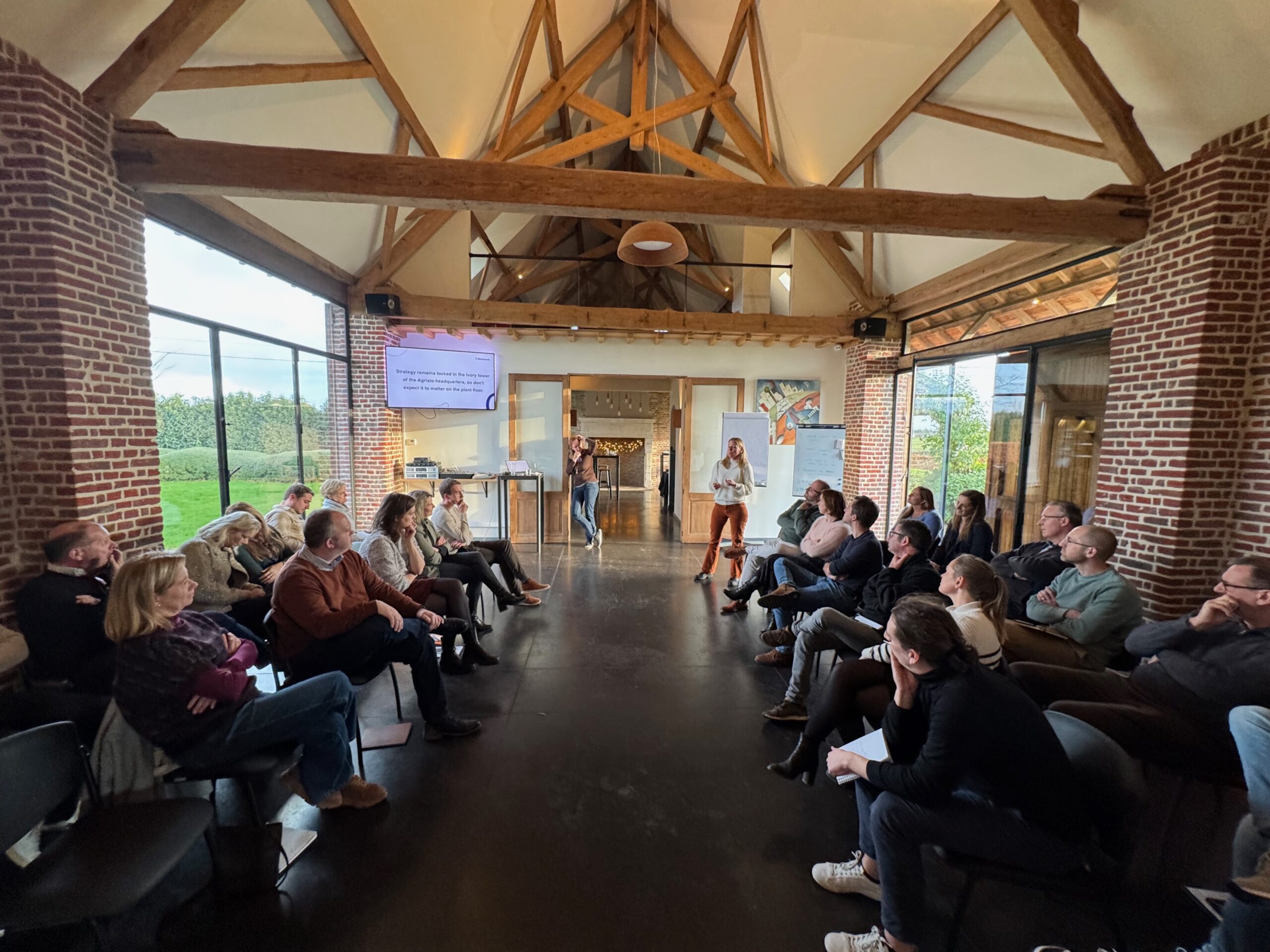Strategy: Between Dream & Deed – Insights from Agristo Middle Managers
By Nick Van Langendonck (LinkedIn)

Intro Agristo Potatoholics
Agristo (website) is not just a company; it’s a global community of passionate Potatoholics—people who see the potato as more than just a crop. Since its establishment in 1986, Agristo has grown into a leading producer of frozen and pre-fried potato products, serving customers in over 120 countries. With cutting-edge production facilities in Belgium (Wielsebeke, Harelbeke and Nazareth) and the Netherlands (Tilburg) Agristo transforms humble potatoes into high-quality products that delight millions worldwide.
At the heart of Agristo’s success is a relentless drive for innovation and sustainability. The company is committed to making every potato count, implementing green processes, reducing waste, and collaborating with partners to maximize efficiency and minimize environmental impact. For Agristo, sustainability isn’t just a buzzword—it’s an integral part of the journey, shaping every step of the production process.
Agristo’s products range from golden fries to premium potato specialties, offering versatile solutions for households, foodservice, and retail. The company’s dedication to quality, reliability, and innovation has earned it a trusted reputation among its partners and customers alike.
Being a Potatoholic at Agristo means embracing challenges, pushing boundaries, and finding smarter ways to create impact. It’s about passion, progress, and a shared commitment to turning one of the earth’s simplest resources into extraordinary moments. Agristo’s story is a celebration of what’s possible when tradition meets innovation and sustainability drives success.
Agristo Leaders @ Work Sessions
This “Strategy: Bridging the Gap Between Dream and Action” session was part of the Agristo Leaders at Work program, designed to support Agristo’s leaders in translating strategy into actionable goals for their teams, setting clear priorities, monitoring progress, making decisive choices, and creating space for employees to take ownership of their responsibilities.
Together with Raffaella Berardo, CEO of Miele BeLux, we inspired Agristo’s leaders by sharing concepts and practical experiences focused on two key questions:
1 How do you achieve a supported strategy?
We explored the critical elements of creating buy-in for a strategy, emphasizing the importance of alignment, shared values, and fostering a sense of ownership among teams.
2 How can you take ownership of a strategy and turn it into an attractive story for your team, even if you weren’t involved in the strategy-making process?
Through storytelling techniques and actionable tools, we demonstrated how leaders can internalize a strategy, personalize it, and present it as a compelling narrative that resonates with their team’s goals and aspirations.
This session equipped Agristo’s leaders with the insights and tools needed to bridge the gap between strategy and execution, inspiring their teams to contribute meaningfully to shared objectives.

Picture: Remember that famous Peter Drucker slogan, “Culture eats strategy for breakfast”? Strategy only has a chance, Drucker pointedly suggests, if people actively buy-in and champion it. Therefore, we organized a strategy jam to help ensure that the leaders of Agristo do, providing an opportunity for large groups of people to engage in moderated strategy discussions.
What Agristo Leaders take away from our workshop?
Below is an overview of your key insights from our three *Leaders@Work* sessions, thoughtfully organized according to Agristo’s four core values. We hope this structure helps them bridge the gap between strategic work and your daily efforts, with the shared values serving as the glue that makes their organization so strong.
1 Eyes on the Future
– Strategy is a clear choice—not a science—and it always requires sacrificing things we hold dear.
– Stay focused on a simple, clean core version of the strategy: Who, What, How, Value Proposition.
2. Care for People
– Knowing Agristo has a strategy is not the same as understanding the strategy.
– Repeat, repeat, and teach, teach.
– Use classic storytelling frameworks to create a compelling story: the monster, the quest, or the comeback.
– Always communicate from your employee’s perspective.
– Keep it simple—apply the grandmother test.
– Allow teams to personalize the strategy and give each other time.
– Ask open questions daily to internalize the strategy.
– Feedback is a gift—use the FRIT method.
3. Open to Change
– Make cross-functional teams jointly responsible for strategic priorities.
– Encourage idea clashes—they lead to higher quality outcomes.
– Use consent rather than consensus for decision-making.
– Frame problems as “us vs. the issue” rather than “us vs. them.”
– Speak from personal experience when discussing ideas and opinions.
– Maintain an overview of tools available for support.
4. Do with Drive
– Take initiative—ask for forgiveness rather than permission.
– Regularly conduct a “start-stop-continue” exercise with your team.
These insights serve as a foundation to help leaders bridge the gap between strategic ambitions and daily actions while staying true to Agristo’s core values.
